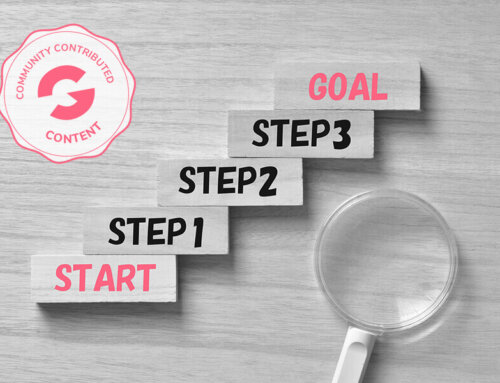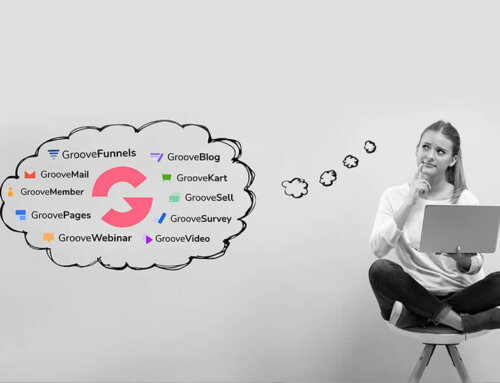Do you find yourself pouring your heart and soul into your web page content, nailing down your basic keywords for SEO, but still struggling to rank on Google? Off-page SEO might be the reason why.
When it comes to executing the best SEO strategy, you’re going to want to address both on-page SEO and off-page SEO to advance your Search Engine Results Page (SERPs) – which requires going beyond the basic optimization tactics.
- On-page SEO includes all of the steps you have to take in order to tell Google what your post or page is about, and is usually enough to get you high rankings.
- Off-page SEO includes all of the steps that happen outside of your website and are essential for highly competitive niches and keywords.
Off-page SEO is often thought to only be link building, like what on-page SEO is often thought to be only keywords, but there are more advanced tactics to gain a competitive advantage.
It can also include integration with third-party systems, or communication with search engines through their own tools. But, as mentioned, the most popular off-page SEO is through “backlinks” or “link building.” These links are all the websites, outside of your domain, that have clickable links that redirect visitors back to your domain.
Simply put, off-page factors are the search signals that tell Google what others think of your site and content for SERPs. As a simple explanation of off-page SEO, this article will cover two main tactics that don’t involve making changes to your own website or publishing content on your own site.
1. Google System Communication for Off-Page SEO
Webpages and digital content are not automatically found by Google. There are traditional indexing of properties that require the assistance of other properties of authority in order to do this. So, this includes:
- Properties that have already been indexed.
- Search engines will follow websites that are often visited.
- Systems will habitually follow links on those websites.
This means that you can take control of this system by communicating directly with Google, within its own system. Here are the basics for doing so:
Website Submission
You can submit your properties (full URLs) to search engines, using the following website submission and pinging services:
1. Submitstart
2. Pingomatic
Google Analytics
This is an advanced tool for SEO marketers that provides even more performance statistics than Google Search Console. It’s where you can discover in-depth details such as where your traffic is coming from, locations and languages of your site’s visitors, how long visitors stay on your site, how quickly people click off your webpages, etc.
You’re likely not going to use all the features as an average user, but you can use this for ongoing communication with Google – especially when there are changes to your website.
Tip: You can integrate Google Analytics directly on GroovePagesⓇ!
Google My Business
GMB is a free business profile from Google. It’s a tool that allows you to manage how your business appears on Google Search and Maps.
These are the profiles that rank first in Google’s boxed area at the top of the search results when you query a local search. It’s an easy-to-use tool to manage your online presence across Google by adding your business name, location, hours, photos, as well as monitor and reply to customer reviews.
2. Link Building for Off-Page SEO
When it comes to SEO, it is important to receive backlinks from outside webpages. Reason being, each one counts as a sort of “vote” (evaluated in both quantity and quality). Think of it as a vote of confidence, vouching for your organization. The higher authority of the websites from which the backlinks come, the better your webpages will perform.
However, there is such a thing as unnatural links. Given the fact that link building boosts your ranking, marketers have tried questionable, paid-for tactics. As a result, campaigns that generate you hundreds of links all at once will incur penalties from Google – something you definitely want to avoid. All backlinks should be accumulated naturally, over time.
While there isn’t a definitive guide that you can follow to keep your site from being penalized, but there are several organic approaches to building your own backlinks that are effective, including:
- Social media: Include website URLs on major social profiles, as well as posts and comments.
- Blogs: Create shareable blog content.
- Guest blogging: Contribute as a “guest blogger” on other websites.
- Blog commenting: Leave comments on relevant and related blog posts.
- Article directories: Write and submit articles.
- Press releases: Write and submit press releases for syndication.
- Community forums: Interact and partake in discussion groups.
Discover Competitor’s Backlinks
Relatively simple! Use a Google command – “link:” – when searching for your competitor’s backlinks (e.g. link:groovefunnels.com).

This will populate all the sites that point back to your competitor. The number of links will give you an approximate estimation of the strength of your competition, however a properly optimized on-page SEO can outperform properties with even thousands of backlinks!
Similar to on-page SEO, research on your competitors is essential to your success in SEO. For this type of research, you can also make use of third-party tools. But, you’ll find that using Google works best!
Create Compelling Infographics
Neil Patel says on his website that he will spend upwards of $1,000 to have a single infographic designed. That’s how valuable a high-quality infographic can be for your off-page SEO.
You can find freelance designers on popular marketplaces such as Dribbble, Fiverr, and Upwork. Or you can even give it a go and create your own on YouZign, Piktochart, Canva, or Visme.
Broken Link Building
This is easier and faster than guest blogging, and it could be a substantial means to earn backlinks from authority pages.
Ever clicked on a link only to land to a 404 error page? This is called a broken link, which can happen as hosting expires or during migration or as a result of typos. Whatever the reason, it doesn’t make for a great user experience.
By conducting a backlink analysis on a site that’s relevant to your niche, you can find a broken link, contact the site owner, and let them know about it. Because you’re helping them out, you could offer a high-value, replacement link to your own site when appropriate, and they might link your website to return the favor.
***
SEO is a long-term game, and all site owners are looking to strike gold by landing on the first page of Google. But you should know that the efforts you put in today, if done correctly, are going to pay off after several months. Continue to produce quality content, supported by on-page SEO, and you’ll be well on your way to earning those backlinks and improving your off-page SEO.
It can feel like navigating a minefield, which is why there are specialists dedicated to improving on- and off-page optimization for businesses. But if you are able to develop a basic understanding of these tactics, you are bound to be ahead of your competition when it comes to getting your new content seen on SERPs.





Leave A Comment